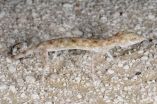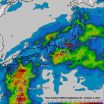(Press-News.org) Eating disorders (ED) such as anorexia nervosa, bulimia, and binge eating disorder affect approximately 5-10% of the general population, but the biological mechanisms involved are unknown. Researchers at Inserm Unit 1073, "Nutrition, inflammation and dysfunction of the gut-brain axis" (Inserm/University of Rouen) have demonstrated the involvement of a protein produced by some intestinal bacteria that may be the source of these disorders. Antibodies produced by the body against this protein also react with the main satiety hormone, which is similar in structure. According to the researchers, it may ultimately be possible to correct this mechanism that causes variations in food intake.
These results are published in the journal Translational Psychiatry, in the online issue of 7 October 2014.
Anorexia nervosa, bulimia and binge eating disorder are all eating disorders (ED). If the less well defined and atypical forms are included, ED affect 15-20% of the population, particularly adolescents and young adults. Despite various psychiatric, genetic and neurobiological studies, the molecular mechanism responsible for these disorders remains mysterious. The common characteristic of the different forms of ED is dysregulation of food intake, which is decreased or increased, depending on the situation.
Sergueï Fetissov's team in Inserm Joint Research Unit 1073, "Nutrition, inflammation and dysfunction of the gut-brain axis" (Inserm/University of Rouen), led by Pierre Déchelotte, studies the relationships between the gut and the brain that might explain this dysregulation.
The mimic of the satiety hormone
In this new study, the researchers have identified a protein that happens to be a mimic of the satiety hormone (melanotropin). This protein (ClpB) is produced by certain bacteria, such as Escherichia coli, which are naturally present in the intestinal flora. Where this protein is present, antibodies are produced against it by the body. These will also bind to the satiety hormone because of its structural homology to ClpB, and thereby modify the satietogenic effect of the hormone. The sensation of satiety is reached (anorexia) or not reached (bulimia or overeating). Moreover, the bacterial protein itself seems to have anorexigenic properties.
Variations in food intake in the presence of the bacterial protein
To obtain these results, the researchers modified the composition of the intestinal flora of mice to study their immunological and behavioural response. Food intake and level of antibodies against melanotropin in the 1st group of mice, which were given mutant E. coli bacteria (not producing ClpB) did not change. In contrast, antibody level and food intake did vary in the 2nd group of animals, which received E. coli producing ClpB protein.
The likely involvement of this bacterial protein in disordered eating behaviour in humans was established by analysing data from 60 patients.
The standardised scale "Eating Disorders Inventory-2" was used to diagnose these patients and evaluate of the severity of their disorders, based on a questionnaire regarding their behaviour and emotions (wish to lose weight, bulimia, maturity fears, etc.). Plasma levels of antibodies to ClpB and melanotropin were higher in these patients. Furthermore, their immunological response determined the development of eating disorders in the direction of anorexia or bulimia.
These data thus confirm the involvement of the bacterial protein in the regulation of appetite, and open up new perspectives for the diagnosis and specific treatment of eating disorders.
Correcting the action of the protein mimicking the satiety hormone
"We are presently working to develop a blood test based on detection of the bacterial protein ClpB. If we are successful in this, we will be able to establish specific and individualised treatments for eating disorders," say Pierre Déchelotte and Sergueï Fetissov, authors of this study.
At the same time, the researchers are using mice to study how to correct the action of the bacterial protein in order to prevent the dysregulation of food intake that it generates. "According to our initial observations, it would indeed be possible to neutralise this bacterial protein using specific antibodies, without affecting the satiety hormone," they conclude.
INFORMATION:
Sources
Bacterial ClpB heat-shock protein, an antigen-mimetic of the anorexigenic peptide α-MSH, at the origin of eating disorders
Naouel Tennoune1,2, Philippe Chan4,2, Jonathan Breton1,2, Romain Legrand1,2, Yassine Naït Chabane3,2, Kirsti Akkermann7, Anu Järv8, Wassila Ouelaa1,2, Kuniko Takagi1,2, Ibtissem Ghouzali1,2, Marie Francois1,2, Nicolas Lucas1,2, Christine Bole-Feysot1,2, Martine Pestel-Caron6,2,9, Jean-Claude do Rego5,2, David Vaudry4,2, Jaanus Harro7, Emmanuelle Dé 3,2, Pierre Déchelotte1,2,9, Sergueï O. Fetissov1,2*
1Inserm UMR1073, Nutrition, Gut and Brain Laboratory, Rouen, 76183, France;
2Institute for Research and Innovation in Biomedicine (IRIB), Rouen University, Normandy University, 76000, France;
3Polymers, Biopolymers, Surfaces, UMR 6270 CNRS, Mont-Saint-Aignan, 76821, France;
4PISSARO Proteomic Platform, Mont-Saint-Aignan, 76821, France;
5Animal Behavior Platform (SCAC), Rouen, 76183, France;
6Research Group on Antimicrobial Agents and Microorganisms (GRAM, EA2656), Rouen, 76183, France;
7Department of Psychology, Estonian Centre of Behavioural and Health Sciences, Tartu, 50409, Estonia;
8Tartu University Clinics, Psychiatric Hospital, University of Tartu, Tartu, 50417, Estonia;
9Rouen University Hospital, CHU Charles Nicolle, 76183, Rouen, France.
Translational Psychiatry, October 2014
doi:10.1038/nn.3773
This study was carried out in collaboration with other teams and platforms of the Institute for Research and Innovation in Biomedicine (IRIB) Normandy Rouen, and with the University of Tartu (Estonia). It extends other work published by the research team in 2013, which demonstrated molecular mechanisms for increasing the appetite by immunoglobulins that protect the hunger hormone (ghrelin) in obese people.
Research contact
Pierre Déchelotte
Director, Inserm Unit 1073 team "Nutrition, inflammation and dysfunction of the gut-brain axis" (Inserm/University of Rouen)
Tel.: +33 (0)2 32 88 64 65 / +33 (0)2 35 14 82 40
Pierre.Dechelotte@chu-rouen.fr
Sergueï Fetissov
Researcher, Inserm Unit 1073, "Nutrition, inflammation and dysfunction of the gut-brain axis" (Inserm/University of Rouen)
serguei.fetissov@univ-rouen.fr
Tel.: +33 (0)2 35 14 82 55 40
Laboratory office: +33 (0)2 35 14 82 40
Press contact
Inserm – Juliette Hardy
presse@inserm.fr
Anorexia/bulimia: A bacterial protein implicated
2014-10-07
ELSE PRESS RELEASES FROM THIS DATE:
Gothenburg researchers identify molecule that protects women's eggs
2014-10-07
A new study led by Professor Kui Liu at the University of Gothenburg has identified the key molecule 'Greatwall kinase' which protects women's eggs against problems that can arise during the maturation process.
In order to be able to have a child, a woman needs eggs that can grow and mature. One of these eggs is then fertilised by a sperm, forming an embryo. During the maturation process, the egg needs to go through a number of stages of reductional division, called meiosis. If problems occur during any of these stages, the woman can become infertile. Around 10-15% of ...
Closing the gap: Extreme desert gecko spotted on salt-flats in central Oman
2014-10-07
The Gulf Sand gecko is a remarkable desert reptile in that it is the only lizard found habitually on sabkha substrate across large parts of the eastern Arabian Peninsula. These arid salt flats constitute one of the harshest habitats on earth, due to their extraordinary salinity.
The Gulf gecko, Pseudoceramodactylus khobarensis, belongs to a genus with a single species, and it is well adapted to this substrate featuring spiny scales beneath the fingers, long extremities and swollen nostrils.
Data on its distribution range showed a conspicuous gap between eastern United ...
Equation helps assess blood flow to flaps for breast reconstruction
2014-10-07
October 7, 2014 – For women undergoing breast reconstruction using the advanced "DIEP" technique, a simple formula can reliably tell whether there will be sufficient blood flow to nourish the DIEP flap, reports a paper in Plastic and Reconstructive Surgery—Global Open®, the official open-access medical journal of the American Society of Plastic Surgeons (ASPS).
Drs Joseph Richard Dusseldorp and David G. Pennington of Macquarie University Hospital, Sydney, performed an ultrasound study to see how well the flap viability index (FVI) equation predicted blood ...
Study: Stroke-fighting drug offers potential treatment for traumatic brain injury
2014-10-07
DETROIT – The only drug currently approved for treatment of stroke's crippling effects shows promise, when administered as a nasal spray, to help heal similar damage in less severe forms of traumatic brain injury.
In the first examination of its kind, researchers Ye Xiong, Ph.D, Zhongwu Liu, Ph.D., and Michael Chopp, Ph.D., Scientific Director of the Henry Ford Neuroscience Institute, found in animal studies that the brain's limited ability to repair itself after trauma can be enhanced when treated with the drug tPA, or tissue plasminogen activator.
"Using this ...
Sharing makes both good and bad experiences more intense
2014-10-07
Undergoing an experience with another person — even if we do it in silence, with someone we met just moments ago — seems to intensify that experience, according to new research published in Psychological Science. The research shows that people who share experiences with another person rate those experiences as more pleasant or unpleasant than those who undergo the experience on their own.
"We often think that what matters in social life is being together with others, but we've found it also really matters what those people are doing," says psychological scientist ...
NASA adds up Japan's soaking rains from Typhoon Phanfone
2014-10-07
Typhoon Phanfone packed heavy rainfall as it brushed over Japan and NASA's TRMM satellite identified where the rain fell. That data was used to make a map of rainfall totals.
The Tropical Rainfall Measuring Mission or TRMM satellite has the ability to calculate rainfall rates within storms as it orbits around the Earth's tropics from space. TRMM data can also be used to create rainfall maps that show how much rain has fallen over given areas.
Phanfone was a powerful super typhoon with sustained wind speed estimated at 130 knots (150 mph) as it approached Japan but ...
Back off: Female chimps stressed out by competing suitors
2014-10-07
Being the center of attention can have its drawbacks. For female chimpanzees, being around too many rowdy males is disadvantageous when foraging for food, an effect that can ultimately interfere with her reproductive ability. These are some of the findings of an 11-year-long study of wild East African chimpanzees in Uganda, led by Melissa Emery Thompson of the University of New Mexico in the US. It is published in Springer's journal Behavioral Ecology and Sociobiology.
Female chimpanzees have an exceedingly slow reproductive schedule, and only give birth every five to ...
Why do women struggling with low sexual desire not seek treatment?
2014-10-07
New Rochelle, NY, October 7, 2014—Low sexual desire is common among both pre- and post-menopausal women. It can cause personal distress, harm relationships, and have a negative impact on body image and self confidence. Yet few women seek medical care for this condition, and the reasons are explored in a timely article in Journal of Women's Health, a peer-reviewed publication from Mary Ann Liebert, Inc., publishers. The article is available free on the Journal of Women's Health website at http://online.liebertpub.com/doi/full/10.1089/jwh.2014.4743 until November 7, ...
Potty training before age 2 linked to increased risk of later wetting problems
2014-10-07
Winston-Salem, N.C. – Sept. Oct. 7, 2014 – Children who start toilet training before age 2 have a three times higher risk of developing daytime wetting problems later, according to new research at Wake Forest Baptist Medical Center.
"Parents who train their children early to meet preschool deadlines, to save landfills from diapers or because they think toddlers are easier to train should know there can be serious repercussions," says lead author Steve Hodges, M.D., an associate professor of pediatric urology at Wake Forest Baptist.
The study, reported ...
Can physical therapy before hip or knee replacement surgery improve outcomes?
2014-10-07
ROSEMONT, Ill.—Physical therapy after total hip (THR) or total knee replacement (TKR) surgery is standard care for all patients. A new study, appearing in the October 1 issue of the Journal of Bone & Joint Surgery (JBJS), also found that physical therapy before joint replacement surgery, or "prehabilitation," can diminish the need for postoperative care by nearly 30 percent, saving an average of $1,215 per patient in skilled nursing facility, home health agency or other postoperative care.
Approximately 50 million U.S. adults have physician-diagnosed arthritis. ...





